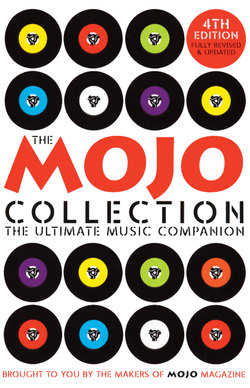Читать книгу The Mojo Collection - Various Mojo Magazine - Страница 37
На сайте Литреса книга снята с продажи.
Charles Mingus The Black Saint And The Sinner Lady Some say it’s the best jazz record ever made. Mingus thought it was folk music. Whatever it is, it’s brilliant.
ОглавлениеRecord label: Impulse!
Produced: Bob Thiele
Recorded: New York; January 20, 1963
Released: April 1963
Chart peaks: None (UK) None (US)
Personnel: Rolf Ericson, Richard Williams (t); Quentin Jackson (tb); Don Butterfield (tuba); Jerome Richardson (soprano sax, bs, flute); Dick Hafer (ts, flute); Charlie Mariano (as); Jaki Byard (p); Jay Berliner (g); Charles Mingus (b, p); Dannie Richmond (d)
Track listing: Track A: Solo Dancer, Stop Look And Listen, Sinner Jim Whitney; Track B: Duet Solo Dancers, Hearts Beat And Shades In Physical Embraces; Track C: Group Dancers (Soul Fusion) Freewoman And Oh, This Freedom’s Slave Cries; Mode D: Trio And Group Dancers, Stop! Look! And Sing Songs Of Revolutions!; Mode E: Single Solos And Group Dance, Saint And Sinner Join In Merriment On Battle Front; Mode F: Group And Solo Dance, Of Love, Pain And Passioned Revolt, Then Farewell, My Beloved,’ Til It’s Freedom Day
Running time: 37.37
Current CD: Impulse! IMP11742
Further listening: Mingus, Mingus, Mingus, Mingus, Mingus (1963)
Further reading: Beneath The Underdog (Charles Mingus, 1971); www.mingusmingusmingus.com
Download: iTunes; HMV Digital
Charles Mingus decided in 1963 that henceforth his outfit would be known as the Charles Mingus New Folk Band. This rich, compelling work is closer to the metropolitan, symphonic jazz of Duke Ellington than anything a casual listener would recognise as folk music but, thinking about it, you can see his point – there’s something very ‘of the people’ about this music, as sprawling, crowded and buzzy as a city, multi-faceted and teeming with life.
Superficially it has the sleazy, urban feel of an Elmer Bernstein film score; lots of conversational muted horns and slurring, rubato saxes, which, during recording, Mingus set in a V shape with the tenor at the fulcrum, furthest away from the mic. Such careful positioning gives the sound a theatrical sense of space – the brass interplay resembles dialogue. In this, though Mingus describes the music as a dance, it’s more operatic. The use of overdubbing was unusual in jazz in the early ’60s, but its employment here helps a modest-sized band sound busy and imposing.
Mingus, who’d spent some time as a patient in New York’s Bellevue mental hospital, was never one for explaining himself rationally; his sleeve notes for the album were pell-mell. Starting to describe the action and then quickly digressing into a rant about critics, he asks the listener to ‘throw all other records of mine away except maybe one other’. The track names weren’t much help, and a review of the album by Mingus’s psychiatrist tells us we’re in the presence of mischief. Dr Edmund Pollock PhD offers the following interpretation: ‘There are recurrent themes of loneliness, separateness and tearful depression; Mr Mingus cries of misunderstanding of self and people. Throughout he presents a brooding, moaning intensity about prejudice, hate and persecution.’ Cranky, stubborn and angry he may have been, but Mingus could not keep the intense pleasure that music brought him out of his work. Whatever the good doctor said, The Black Saint And The Sinner Lady drips with joy.
